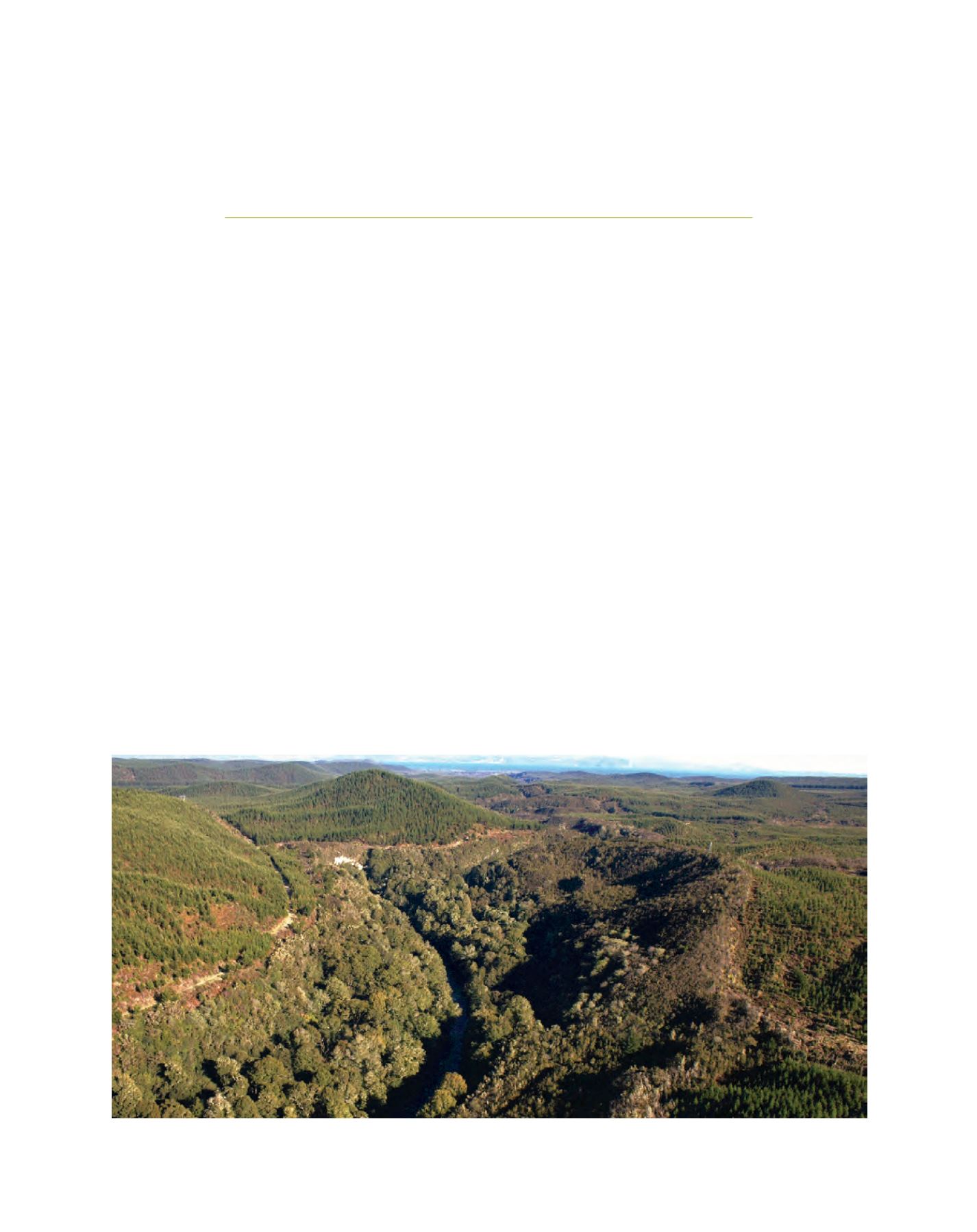

[
] 234
A forestry joint venture on
indigenous land in New Zealand
George Asher, Lake Taupo and Lake Rotoaira Forest Trust, New Zealand
W
hen European settlers arrived in New Zealand in the
early 1800s, all land (over 26 million hectares) was
under the communal authority of over forty differ-
ent Maori tribes. In 1840 the Maori and the British Crown
signed the cornerstone Treaty of Waitangi, providing dual
recognition of Maori customary rights over their lands and
natural resources and forming the basis for the establishment
of British sovereignty. Unfortunately Maori rights ‘guaranteed’
in the Treaty were never afforded subsequent policy or statu-
tory recognition.
This article outlines the successful establishment of a modern, indig-
enous people’s commercial forestry venture that is underpinned by
world-class sustainable management practices. The venture epito-
mizes the remarkable response of the New Zealand Maori to historical
challenges of land alienation and threats to their authority (mana
whenua) over the land. A feature of this venture is maintenance of
the intrinsic relationship of the Maori landowners with their ancestral
land and how these values yield a vital reference for the sustainable
management of the modern, commercial venture but also provide an
important platform for contemporary and future social, cultural and
economic development for the landowners and the wider
tribal and community stakeholders.
Prolonged breaches and omissions of Treaty guar-
antees to Maori had devastating and irreversible
consequences on Maori livelihood. Land legislation
transformed tribal authority in Maori land to indi-
vidual title, paving the way for individual landowners
to ignore customary obligations to family and tribal
members and dispose of their land interests. A number
of historical Crown actions and instruments accelerated
Maori land alienation between 1860 and 1900. Today,
Maori own about 1.6 million ha (six per cent) of land
in New Zealand.
Traditional Maori livelihoods were sustained through
food sourced from the sea, waterways, forests and culti-
vations and were influenced by seasonal changes. Maori
tribes, including the Ngati Tuwharetoa of the Central
North Island of New Zealand, relied heavily on the
resources available from indigenous forests for food,
shelter, transport and medicine. All natural resources
were managed under a customary stewardship and
sustainable management system (kaitiakitanga) based
Lake Taupo Forest riparian protection zone around the Hinemaiaia River
Image: Carey Carter
















